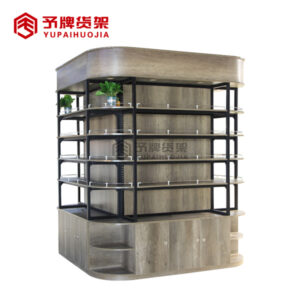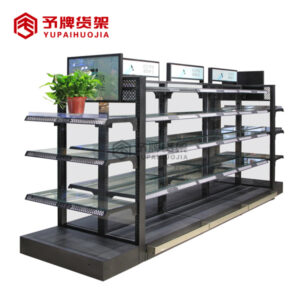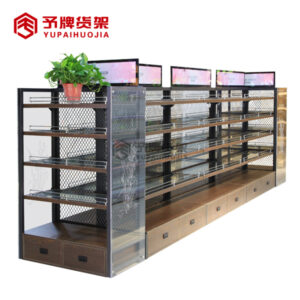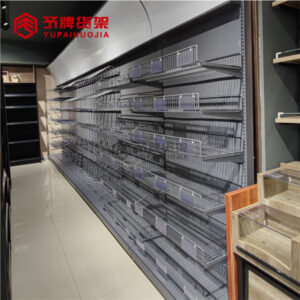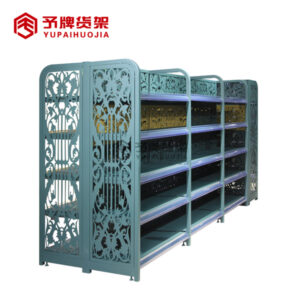The placement of supermarket shelves is a clever marketing tactic. It’s meant to help you find what you need without spending too much time hunting around the store. In this blog post, we’ll explore how supermarkets use the placement of their shelves to influence shoppers and provide recommendations for how you can make the best decisions on where to shop.
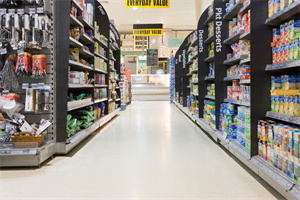
Introduction
When it comes to supermarket shelves, there are various factors that can affect product placement. In this blog post, we will be discussing the different characteristics of supermarket shelves and how they can impact product placement.
The first characteristic of supermarket shelves is the size of the shelf. The size of the shelf can impact the amount of products that can be placed on the shelf, as well as the way in which products are arranged on the shelf.
The second characteristic of supermarket shelves is the shape of the shelf. The shape of the shelf can impact product placement in terms of both visibility and accessibility.
The third characteristic of supermarket shelves is the material of the shelf. The material of the shelf can impact product placement in terms of both durability and aesthetics.
The fourth characteristic of supermarket shelves is the location of the shelf. The location of the shelf can impact product placement in terms of both foot traffic and visibility.
The fifth characteristic of supermarket shelves is the height of the shelf. The height of the shelf can impact product placement in terms
-
 Steel stationery shop display rack for sale
Steel stationery shop display rack for sale -
 Supermarket shelves for sale in dubai
Supermarket shelves for sale in dubai -
 Pharmacy grocery display for sale
Pharmacy grocery display for sale -
 Cosmetic display shelves for shop
Cosmetic display shelves for shop -
 wholesale cosmetic display rack
wholesale cosmetic display rack -
 Supermarket Cosmetics shelves supplier
Supermarket Cosmetics shelves supplier -
 kitchenware store shelves for sale
kitchenware store shelves for sale -
 Adjustable Steel Modern Shelf Steel Shelves Grocery Shelf Mini Store
Adjustable Steel Modern Shelf Steel Shelves Grocery Shelf Mini Store -
 4 post retail shop racking display grocery item display rack supermarket shelf gondola
4 post retail shop racking display grocery item display rack supermarket shelf gondola
The Traditional Way to put supermarket shelves
The traditional way to group items in a supermarket is by product type. For example, all of the meat would be placed together in one section, all of the produce would be placed together in another section, and so on. This system makes it easy for shoppers to find what they’re looking for, but it can also be inefficient because it requires shoppers to walk back and forth across the store to get all of the items on their list.
How Does this Affect Us as Consumers?
There are a few key things to keep in mind when considering how supermarket shelves are placed. For one, the prime real estate is always at eye level and within arms reach. This is because products that are placed here are more likely to be noticed and purchased by consumers. Secondly, the items on the shelves are usually arranged by category, so that related items are grouped together. This makes it easier for shoppers to find what they need and also encourages them to buy more than one item from a particular category. Finally, supermarkets often use special promotions or discounts to entice shoppers to purchase certain items, and these items are usually placed on high traffic areas of the store or on end caps.
As consumers, we can use this knowledge to our advantage by being aware of where certain products are located in the store and also by looking for special deals or promotions. By understanding how supermarket shelves are placed, we can be more efficient shoppers and get the most bang for our buck.
Desired Outcomes for the Consumer
There are a number of desired outcomes for the consumer when it comes to supermarket shelves. Firstly, it is desirable for the shelves to be well-lit so that consumers can easily see the products on offer. Secondly, the shelves should be arranged in an orderly fashion so that consumers can find the products they are looking for quickly and easily. Thirdly, it is desirable for the products on the shelves to be clearly labelled so that consumers know what they are buying. Finally, it is desirable for supermarket shelves to be clean and tidy so that consumers feel comfortable shopping in the store.
Research on Alternative Methods to Group Items in a Supermarket
In order to find out what the placement characteristics of supermarket shelves are, research was conducted on alternative methods to group items in a supermarket. The results showed that there are certain areas of the store that are more advantageous to place items in than others. For example, the front of the store is typically where customers make their decisions about what to purchase. Therefore, it is beneficial to place high-profit margin items in this area. In addition, items that are on sale or clearance should be placed near the front as well so that customers are more likely to see them. The middle aisle of the store is also a good place to put high-profit margin items because it is where customers tend to spend the most time looking for products.
Conclusion
Supermarket shelves are usually arranged so that the most popular items are at eye level, while less popular items are either above or below eye level. This arrangement is intended to make it easy for shoppers to find what they’re looking for and encourages them to buy more impulse items. However, not all supermarket shelves are created equal – some supermarkets have been known to place higher-priced items at eye level in order to encourage customers to spend more money.


